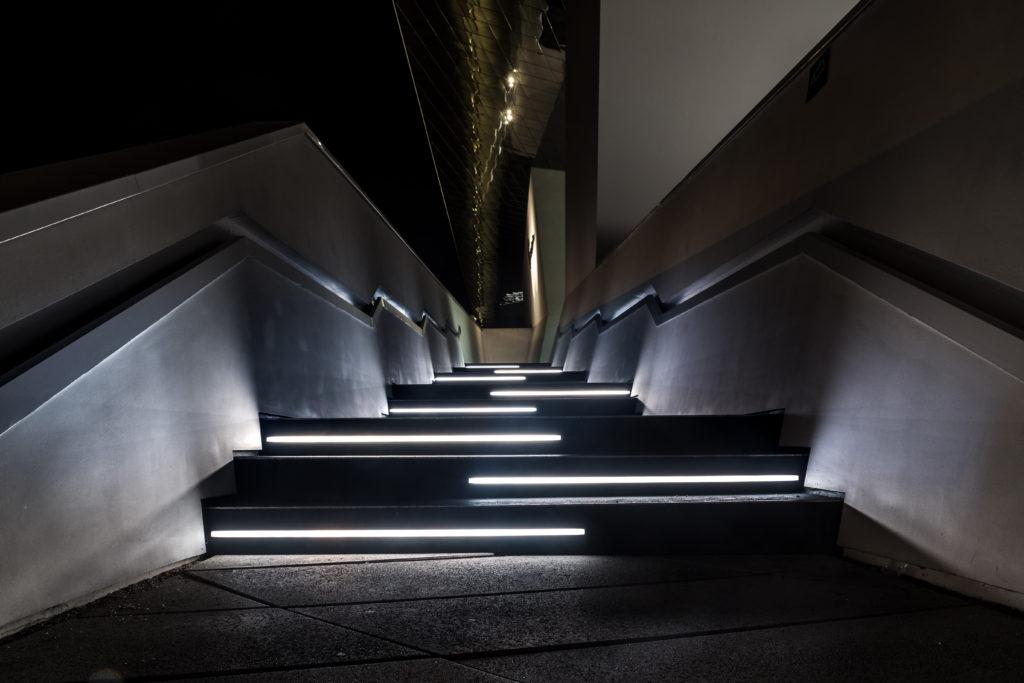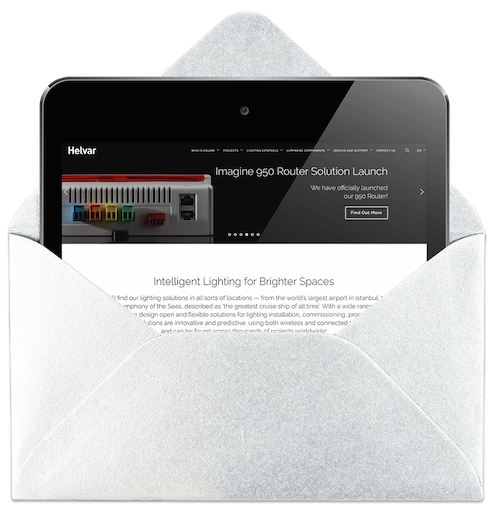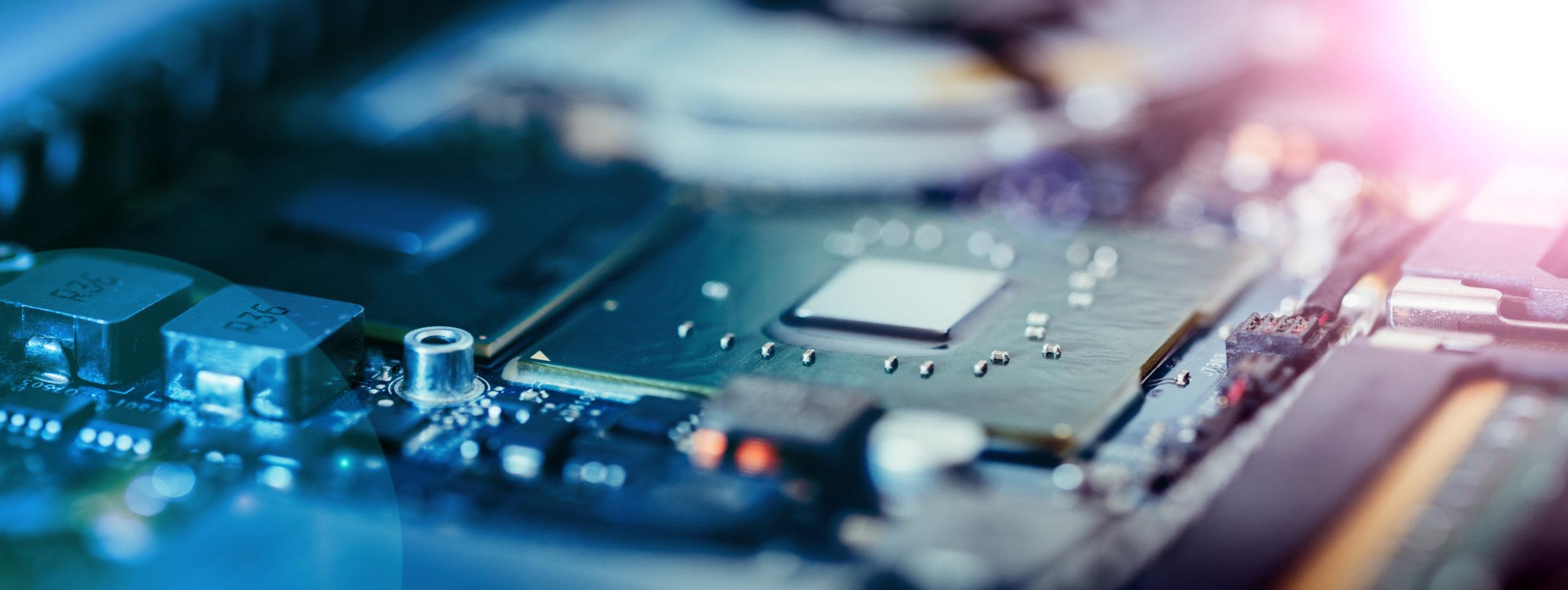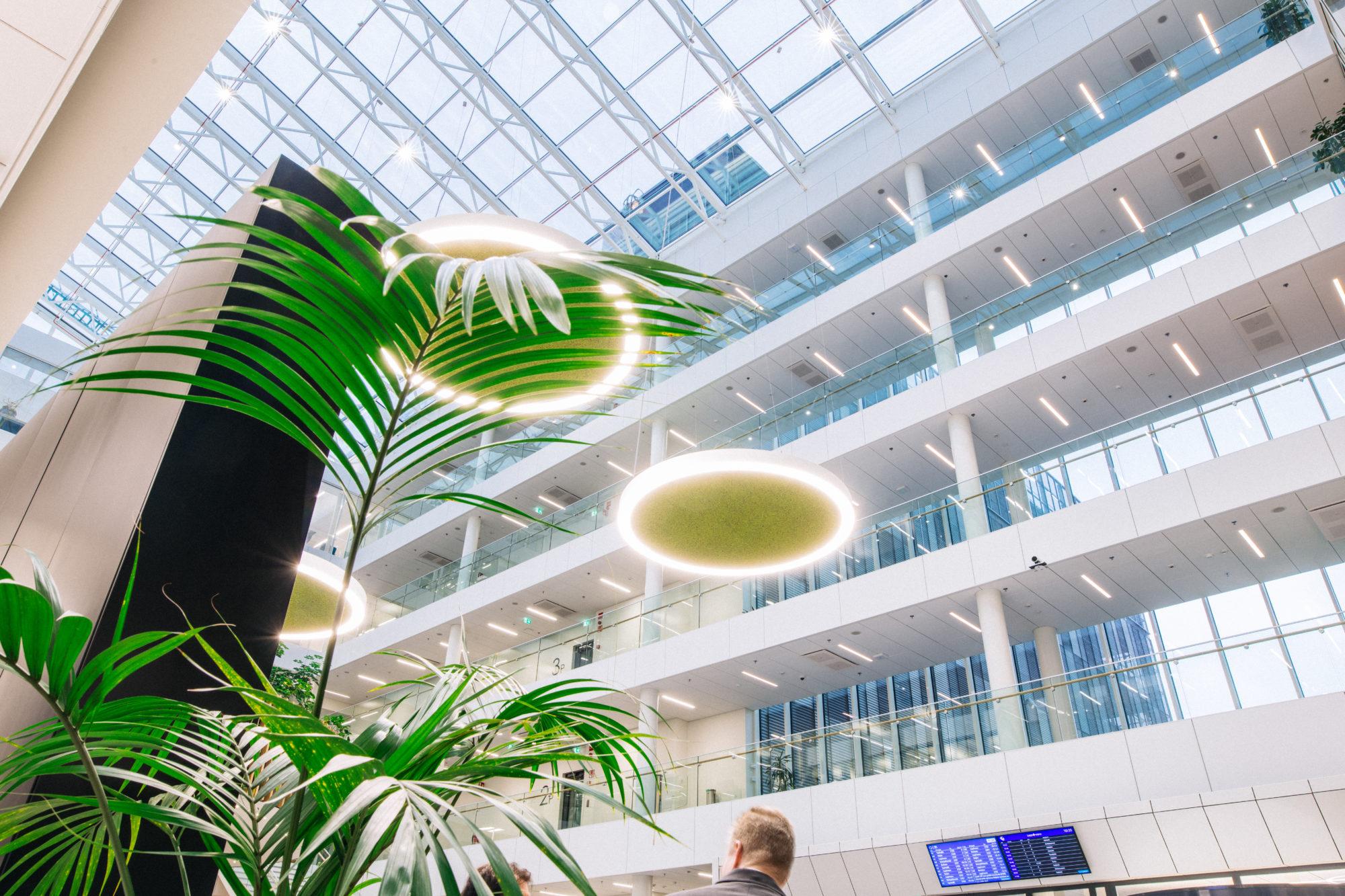The role of AI in lighting.
The lighting industry commonly employs novel techniques in lighting design and control. Significant transformative changes within the sector include the evolution of the light bulb and the introduction of inter-networked lighting components that implement protocols such as DALI.
In the context of lighting control systems, the scope for applying AI is intriguingly broad, impacting the various stages involved in the lighting life-cycle such as design, installation, commissioning, and configuration.
For example, a self-learning network of lighting components can communicate and set-up itself without requiring human intervention, similar to auto-commissioning systems used in the IT industry. Such a network will decrease the time needed to commission new lighting installations.
By observing and measuring the indoor environment, an AI-based lighting system can optimise and tune light parameters accordingly to impact user experience and wellbeing.

The role of AI in lighting.
The lighting industry commonly employs novel techniques in lighting design and control. Significant transformative changes within the sector include the evolution of the light bulb and the introduction of inter-networked lighting components that implement protocols such as DALI.
In the context of lighting control systems, the scope for applying AI is intriguingly broad, impacting the various stages involved in the lighting life-cycle such as design, installation, commissioning, and configuration.
For example, a self-learning network of lighting components can communicate and set-up itself without requiring human intervention, similar to auto-commissioning systems used in the IT industry. Such a network will decrease the time needed to commission new lighting installations.
By observing and measuring the indoor environment, an AI-based lighting system can optimise and tune light parameters accordingly to impact user experience and wellbeing.


AI lighting can benefit many.
The utility of an AI-based lighting system is not limited to end-users or tenants but extends to other stakeholders such as building owners and facility managers as well.
A data-driven network of lighting components continuously generates data which is collected and stored at a centralised server. AI algorithms can run at the source component, such as a sensor, for decentralised, real-time decisions, or at a server for making centralised decisions.
Furthermore, the collected data applies to other Building Management Systems (BMS) such as Heating, Ventilation and Air Conditioning (HVAC), or access management.
AI lighting can benefit many.
The utility of an AI-based lighting system is not limited to end-users or tenants but extends to other stakeholders such as building owners and facility managers as well.
A data-driven network of lighting components continuously generates data which is collected and stored at a centralised server. AI algorithms can run at the source component, such as a sensor, for decentralised, real-time decisions, or at a server for making centralised decisions.
Furthermore, the collected data applies to other Building Management Systems (BMS) such as Heating, Ventilation and Air Conditioning (HVAC), or access management.

AI lighting and privacy.
Despite all of its benefits, in general, AI technology is not without its flaws.
Cameras augmented with AI can detect precise occupancy and movements in a room or space, but the visual feed would require strict adherence to privacy laws. Another significant challenge is the limited human understanding of AI, which impedes its speed of adoption as well.
Luckily, because artificially intelligent lighting typically works with PIR movement detection sensors, there are very few concerns around privacy. Many businesses use artificially intelligent lighting systems as a tried and trusted solution for improving user experience, comfort and productivity, all while achieving tangible energy and cost savings.

AI lighting and privacy.
Despite all of its benefits, in general, AI technology is not without its flaws.
Cameras augmented with AI can detect precise occupancy and movements in a room or space, but the visual feed would require strict adherence to privacy laws. Another significant challenge is the limited human understanding of AI, which impedes its speed of adoption as well.
Luckily, because artificially intelligent lighting typically works with PIR movement detection sensors, there are very few concerns around privacy. Many businesses use artificially intelligent lighting systems as a tried and trusted solution for improving user experience, comfort and productivity, all while achieving tangible energy and cost savings.

Helvar ActiveAhead:
Intelligent wireless lighting made easy.

HELVAR ACTIVEAHEAD® is a truly intelligent and scalable wireless lighting solution. Its unique self-learning capabilities provide ultimate efficiency in setup and operations.
See Artificial Intelligence in action with ActiveAhead!






